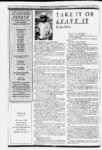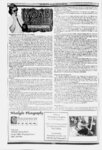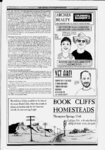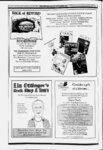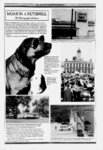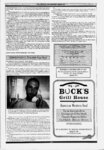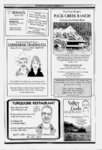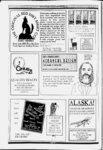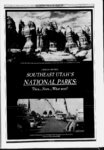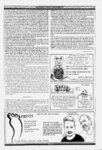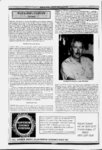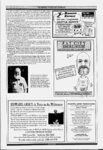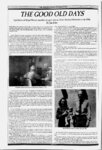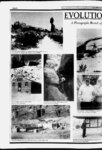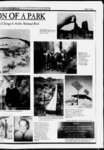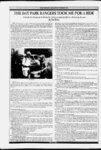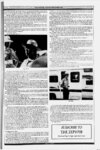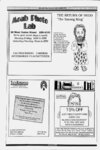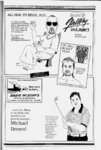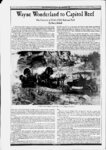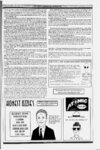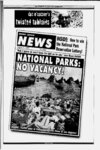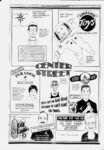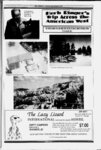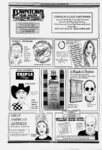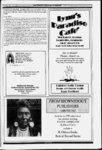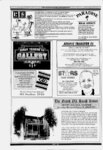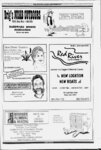| OCR Text |
Show Reef Wonderland to Wayne Capitol The Creation of Utahs Fifth National Park By Barry Scholl In 1910, Ephraim "Port" Pectol, Mormon bishop of Torrey and owner of the Wayne Umpire general store, became interested in publicizing the rugged Wayne Wonderland area east of Torrey. By all accounts Pectol was a visionary a pragmatic visionary. He appreciated the area's scenic attractions, but also recognized that the creation of a state park would draw visitors and help strengthen the region's struggling economy. Pectol' s combination of entrepreneurial sense and local pride is illustrated by his actions in the early 1900s, when he contracted with a Provo candy factory to create "Wayne Wonderland" chocolate bars, with his own store as the principal outlet. This was a man who clearly thought way ahead. By the early 1920s, Petcol had succeeded in rounding up support from a handful of locals, most notably Joseph Hickman, a teacher at Wayne High School. Hickman was elected to the Utah state Legislature in 1925 and succeeded in convincing fellow lawmakers to set aside 160 acres at Fruita as a state park. In 1933, Pectol himself was elected to the legislature, where he pushed Wayne Wonderland as a national park. He was supported in his efforts by Dr. J.E. Broaddus, A.L "Doc" Inglesby, Arthur Chaffin, and others. In 1937, Wayne Wonderland finally became a national monument At the dedication ceremonies, on August 2, 1937, Utah Governor Henry H. Blood late 1920s and early '30s, he had roamed much of the Colorado Plateau, researching his books on outlaws and pioneer lore. Trained as a printer and musician, raised in a very religious family, he left behind both religion and his native Michigan and settled in Salt Lake City after World War L There, he opened a successful printing company and began wandering about the West Introduced to the Torrey area by his friend Doc Inglesby, a retired dentist and rockhound who lived at Fruita, Kelly and his wife, Haniette, were soon in love with the area. They moved to Fruita in 1941, squatting in one of Ingksby's cabins while Kelly wrote and attempted to save money to buy property there. When it became difficult to raise the funds, he agreed to take the job as caretaker in exchange for an annual salary of $120 and free rent at the Chesnut house, which the Park Service had recently purchased. Kelly is one of the Colorado Plateau's most colorful characters. Once described by Wallace Stegner as a "considerable Mormon-eater,- " it is true he was often unsparing in his the of local was in the midst of an imbroglio when he culture, particularly appraisal involving illegal grazing, uranium mining, or vandalism. It is also true that he gpt along well with many devout Mormons, including Bishop Pectol. Call Kelly an outsized figure, one who didn't shy away from controversy. Also call him a lover and protector of Capitol A Model T meets wagons in Capitol Gorge. Courtesy National Park Service predictably touted the link between the creation of the monument and the improvement of the area's primitive roads. He also accurately predicted an increase in tourist traffic. But rhetoric espoused by so many perhaps most interesting, given the inflammatory of his successors. Blood welcomed the assistance of the National Park Service in managing the area: "Proper control, or at least better control than there has been in the past, will result from the establishment of this Capitol Reef National Monument Uncle Sam will help us, and indeed, may direct us. At least we shall have the advantage of the leadership and advice of the men skilled in the handling of such problems, whom the Park Service may send here or choose to train from among our own people." staff, but for the monument's first few years Eventually, there would be a there was no official budget for improvement, interpretation- - even a superintendent Until 1950, the monument was not even activated as a unit of the National Park Service. Prior to that time, it was administratively managed by the superintendent of Bryce Canyon and Zion national parks. Throughout the 1940s, the park saw little improvement and few visitors. Roads were rough; tourist accommodations primitive. A single, highly unreliable phone line sometimes brought news of the outside world. The only electricity was provided by private generators. Through the efforts of President Roosevelt's New Deal, some improvements were effected to trails and a handful of official buildings were constructed. But the monument was still manager because there was still no money to pay one. Then along came lafUng an on-siCharles Kelly. By the time he assumed the job as the monument's caretaker in May, 1943, Kelly was author and outspoken student of regional history. Throughout the already a well-knoanti-feder- al well-train- te ed Reef. Before he retired in February 1959 at the age of 70, Kelly had struggled, often to preserve the park's resources and improve its facilities. When he retired to Salt Lake City, Capitol Reef lost a tireless advocate. But times were changing, visitation was on the rise, and the sleepy monument was about to undergo a single-handedl- y, massive transformation. The late 1950s and early '60s was a time of National Park development nationwide, and Capitol Reef was no exception. The road from the Twin Rocks formation, near the monument's west boundary, to Fruita was paved in 1957. East of Fruita, it was decided the road should continue north through the Fremont River Canyon. But before this could be accomplished, the Park Service first had to buy out the remaining five landowners in Fruita to establish a This proved to be a difficult; prolonged process when two, Cora Smith and Max Krueger, refused to sell Eventually, the National Park Service proceeded with condemnation proceedings. state Attempts on the part of the Park Service to restore Fruita to its weren't always welcomed by visitors, or by representatives of the National Park Service s, itself. In the Acting Regional Director Hugh Miller recommended leaving the Fruita inholdings in private hands. Fruita, he argued, "is an 'exhibit in place,' a typical Mormon settlement which has retained much of its early day charm." Zion National Park Superintendent Paul Franke, who had also served three separate stints in the 1940s and '50s as coordinating superintendent of Capitol Reef, was unswayed by this argument. He replied: The historic features listed in your memorandum, and by the experts, are not visible to me. The worn out buildings are such that even the most pious Mormon would disown. Historic quaintness may be associated with the 'old timers.' iTWENTY-SI- right-of-wa- y. pre-settlem- mid-1960- |

